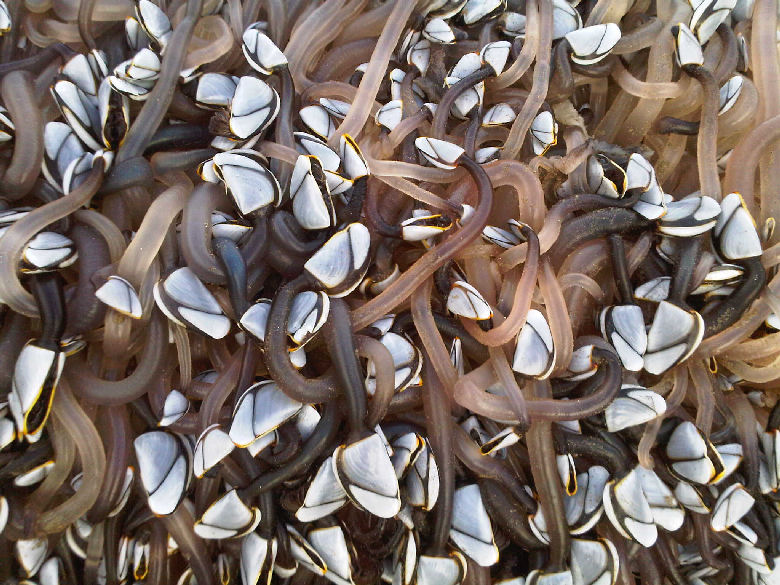146.WHAT ARE BARNACLES?
If you have ever been near the sea and walked along the shore where there are piers, rocks, and breakwater walls, then you’ve almost certainly seen barnacles. In fact, the “crust” you saw that was formed on the piers and rocks was made up of millions and millions of barnacles!
A barnacle is simply a small shellfish. When barnacles are hatched, they swim about freely. But when they reach adult state, they no longer move about. They attach themselves to any convenient surface and actually lose their power of locomotion.
This habit of attaching to a surface, since it is done by millions of barnacles at a time, is quite a nuisance to man. For example, when barnacles form a crust on the hull of a ship, they can cut down its speed by 50 per cent! In the days of smaller ships, barnacles were a real danger because they made steering very difficult and could delay a ship from reaching its port for quite a while. The pirates who sailed the Caribbean Sea had to tip over their Ships on beaches and scrape off the barnacles. Many an old-time whaler could hardly get home after a two-year cruise because of the masses of barnacles clinging to its hull. Even today, with our modern, powerful ships, barnacles cost the world’s shipping industry about £500,000,000 every year because of the loss of time and wear and tear on machinery.
There are many different varieties of barnacles, among them the rock barnacles, which prefer to live on rocks rather than on wood or iron. As we said, when first hatched they resemble tiny crabs or lobsters and can move around. But once a barnacle attaches itself to a surface, it’s for life!
An attached barnacle begins to grow a shell which encloses its body completely. The only thing that moves from then on is tentacles or antennae of the barnacle. There are six pairs of these feathery tentacles and they are able to move about to reach and draw in smaller water creatures for food.



Leave a Reply